Neural
tl;dr
Client
This was an exploratory, self-driven project, which was a part of my PhD research.
Role
Independent design research project in collaboration with Swati Srivastava. We contributed equally to all aspects of the project.
Concept design • Futuring • Visualization • Scenario Building
Timeframe
November 2017 – January 2018
Brief
To explore the different ways in which smart cameras could be present in people’s lives in the near future – capturing, interpreting, learning from, and acting on it.
What would be the effects of their presence on people’s privacy, identity, routines, and interactions?
Outcome
The project resulted in the special issue of a fictional technology magazine called Neural from the near future.
Neural presents a look into the ecology of consumer smart cameras and the implications of their presence in people’s lives in the year 2025.
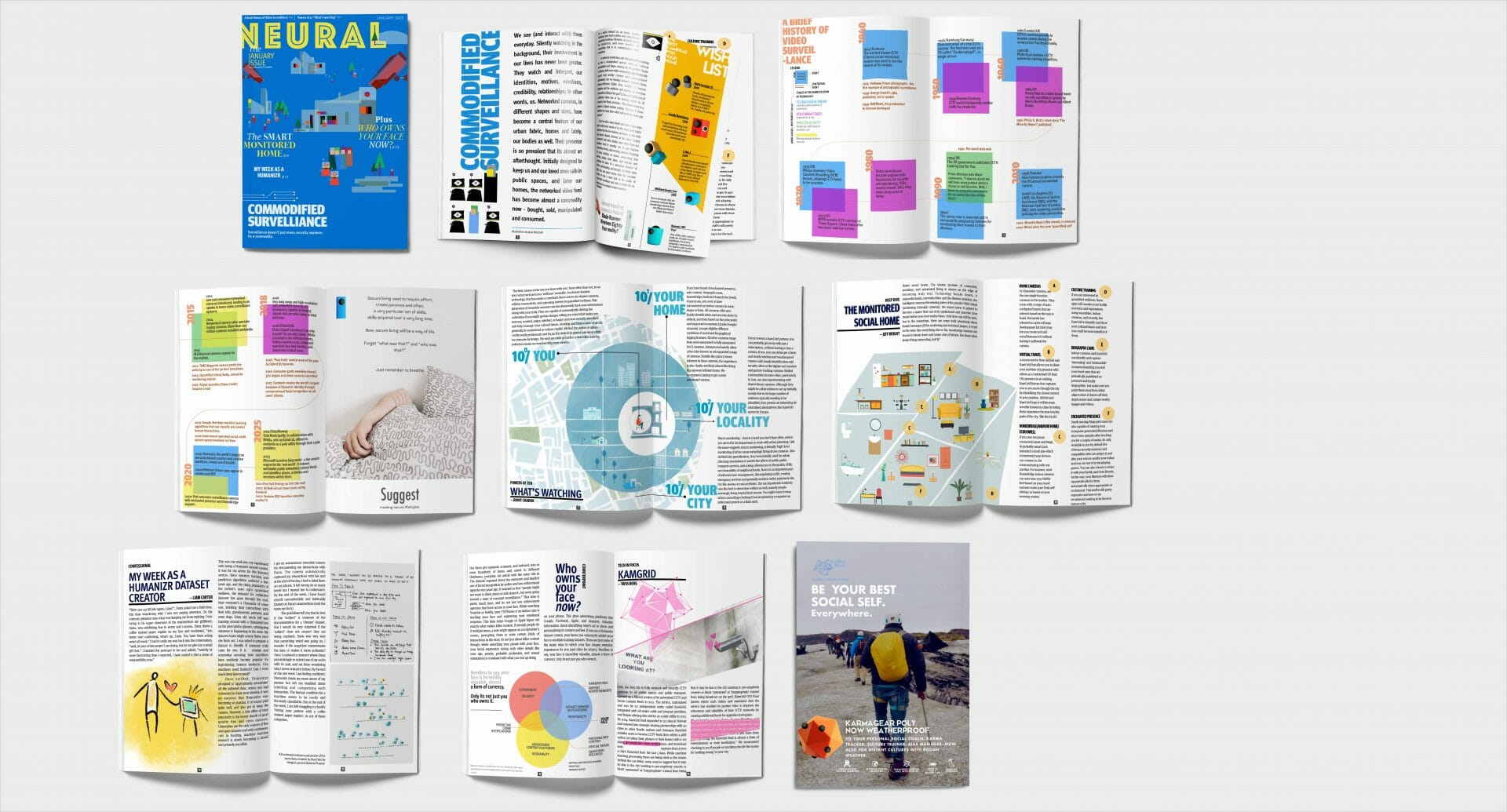
Final magazine spreads
Motivation
This project was motivated by this change in the nature and form of smart cameras and how they affect people’s everyday lives.
Specifically, the project explored questions such as:
What could be a possible future for smart consumer cameras? What are the different forms they could take?
How would they participate in people’s everyday lives and be present in their homes? How would their presence impact people’s habits, experiences, and interactions?
Finally, ethical issues such as, what does their ubiquitous presence mean for moral values such as privacy, trust, and social identity?
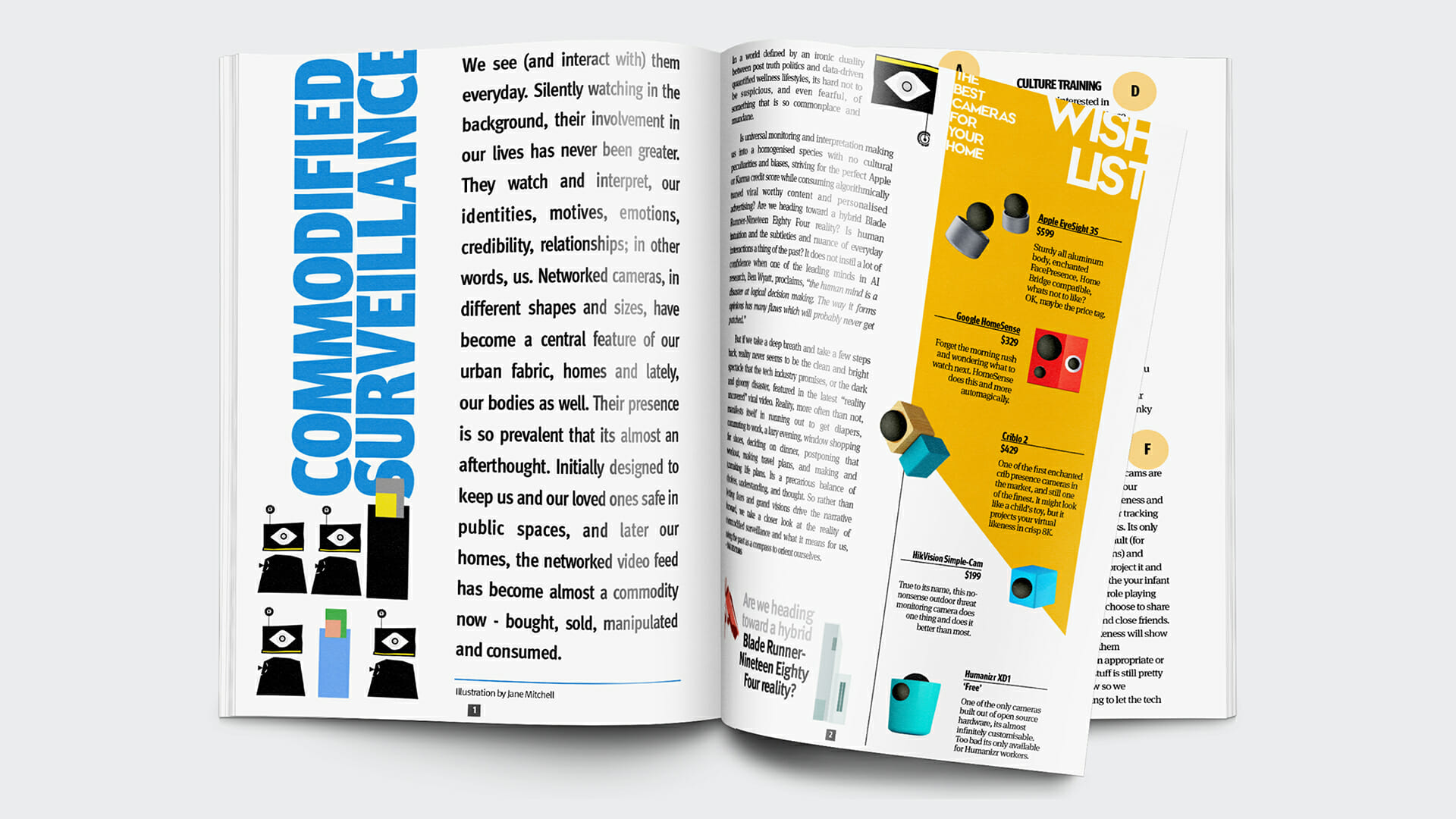
The editorial and featured product section of the magazine
Neural
Neural imagines different expressions of smart cameras that are situated at different scales, from the personal to the urban, to form an ecosystem that people encounter as a part of their everyday lives.
However, with this work, we do not claim or intend to make accurate predictions about the future. Instead, through the magazine issue, we wanted to present a material snapshot of the near future. We designed it through the analytical exploration of possible trajectories that smart cameras could evolve in and what it could mean for people’s everyday routines and behaviours.
The magazine attempted to present personal narratives of interaction and use alongside broader and more systemic discussions of the technology. For example, we created a hand-drawn data visualization, inspired by the Dear Data project, to reflect a journalist’s interaction with a fictional service called Humanizr. Humanizr uses cameras to create data-sets that subjectively label different aspects of people’s interactions with one another in different situations.
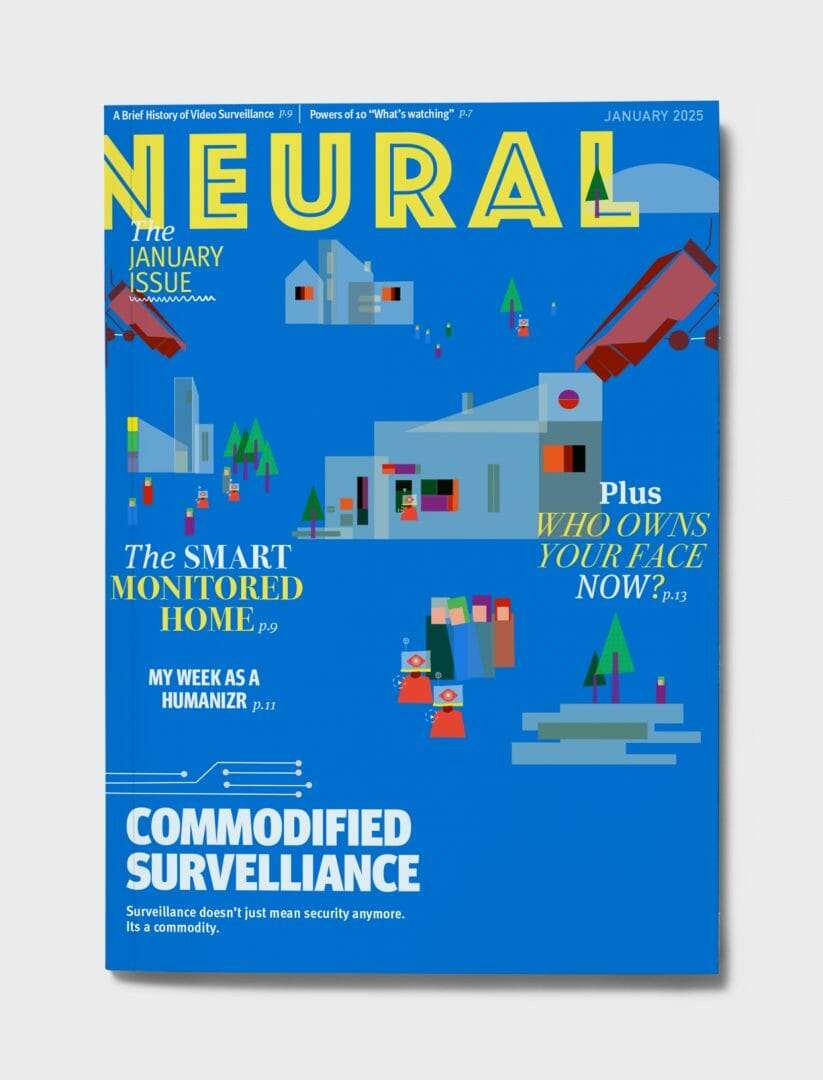

Hand drawn postcard highlighting the quantification of subjective interpersonal interactions
Magazine Spreads









Approach
Imagining possible futures
Collecting signals of possible futures
I collaborated with one of my colleagues, Swati Srivastava, on this project. Together, we collected weak signals – signs of small events or emerging issues – related to smart cameras. We searched for emerging trends and developments related to smart cameras and how these developments were being reported.
The reports were essential to our understanding because they offered a form of cultural commentary on emerging technologies. They didn’t just objectively present the developments but also highlighted their possible benefits for users and the issues that they could create. Finally, we looked at developments in machine learning to explore new ways in which smart cameras could interpret and act on the visual data they capture in the future.
01/
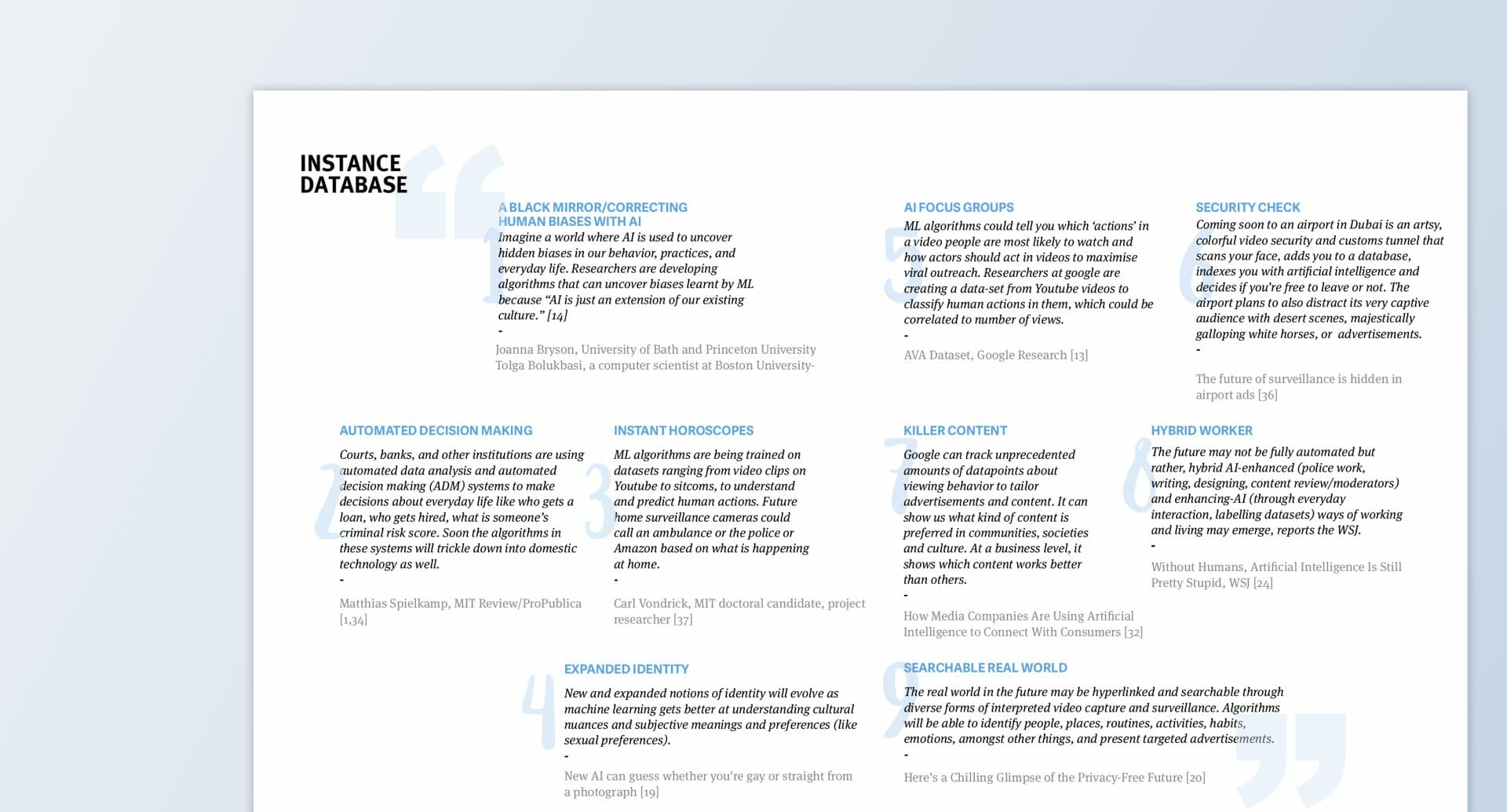
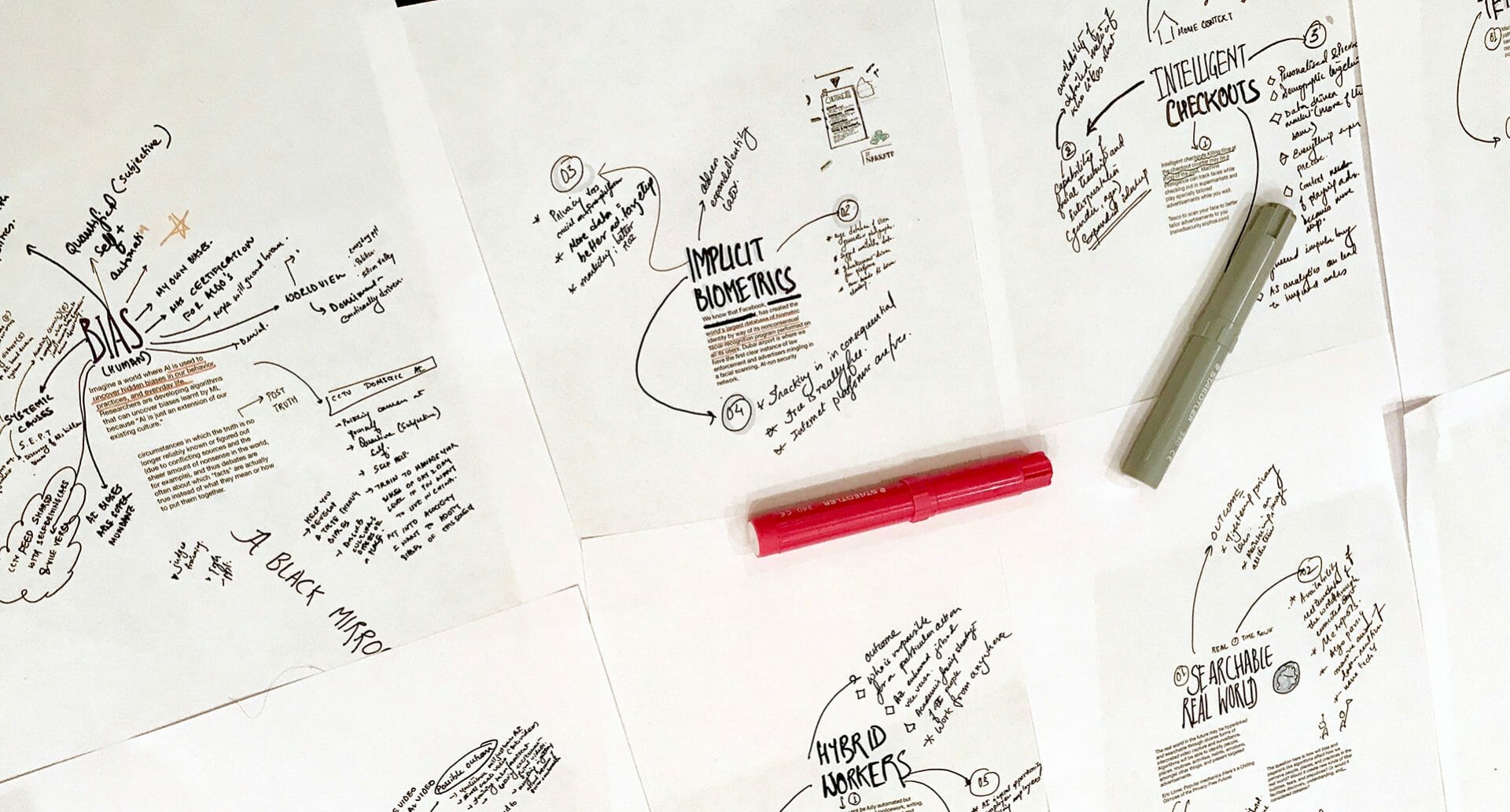
Analysing the instance database
World Building and Brainstorming
We used a variation of the CultureBerg method by Odd studio to identify the ethical values and worldviews underlying the signals.
Together, the weak signals and the cultureberg analysis helped us brainstorm fictional product and service concepts and general perceptions, concerns, and fears that people could have with regards to this technology.
02/
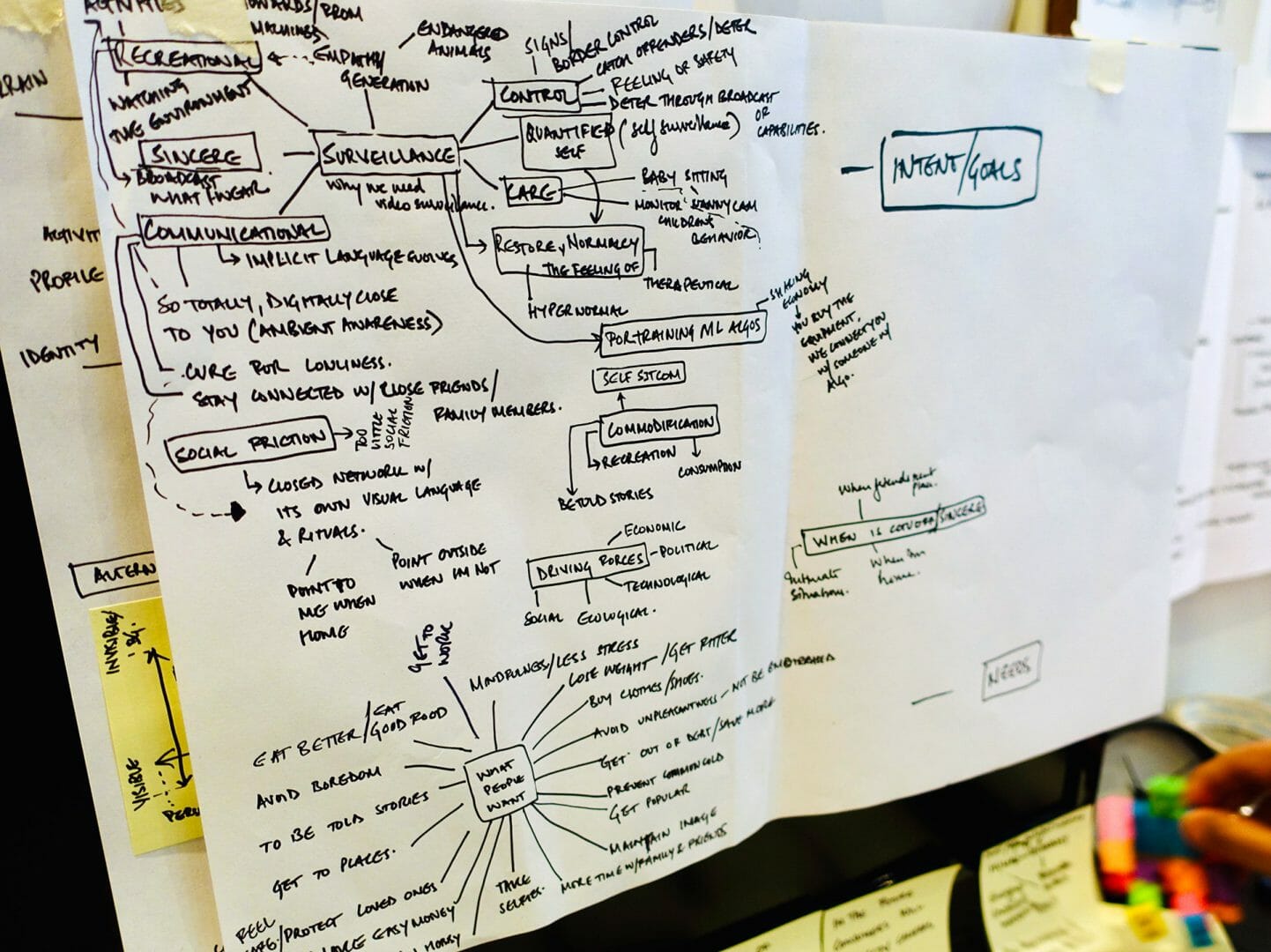
Mapping people's intent and goals with the use of smart video surveillance


Brainstorming possible concepts
Making it real
We chose a magazine format to express this future vision as it allowed multiple aspects and perspectives of the world to be presented within a single overarching narrative. Moreover, this format implicitly highlights real-world contrasts between the marketing-driven tone of advertisements and the subjective tone of the editorial content.
Based on the trends, we wrote articles, created print advertisements, featured product list, technology development timeline, and a cover page. We created detailed print-based infographics and other supporting visuals, creating a thorough diegetic prototype presenting a snapshot of the near future.
03/
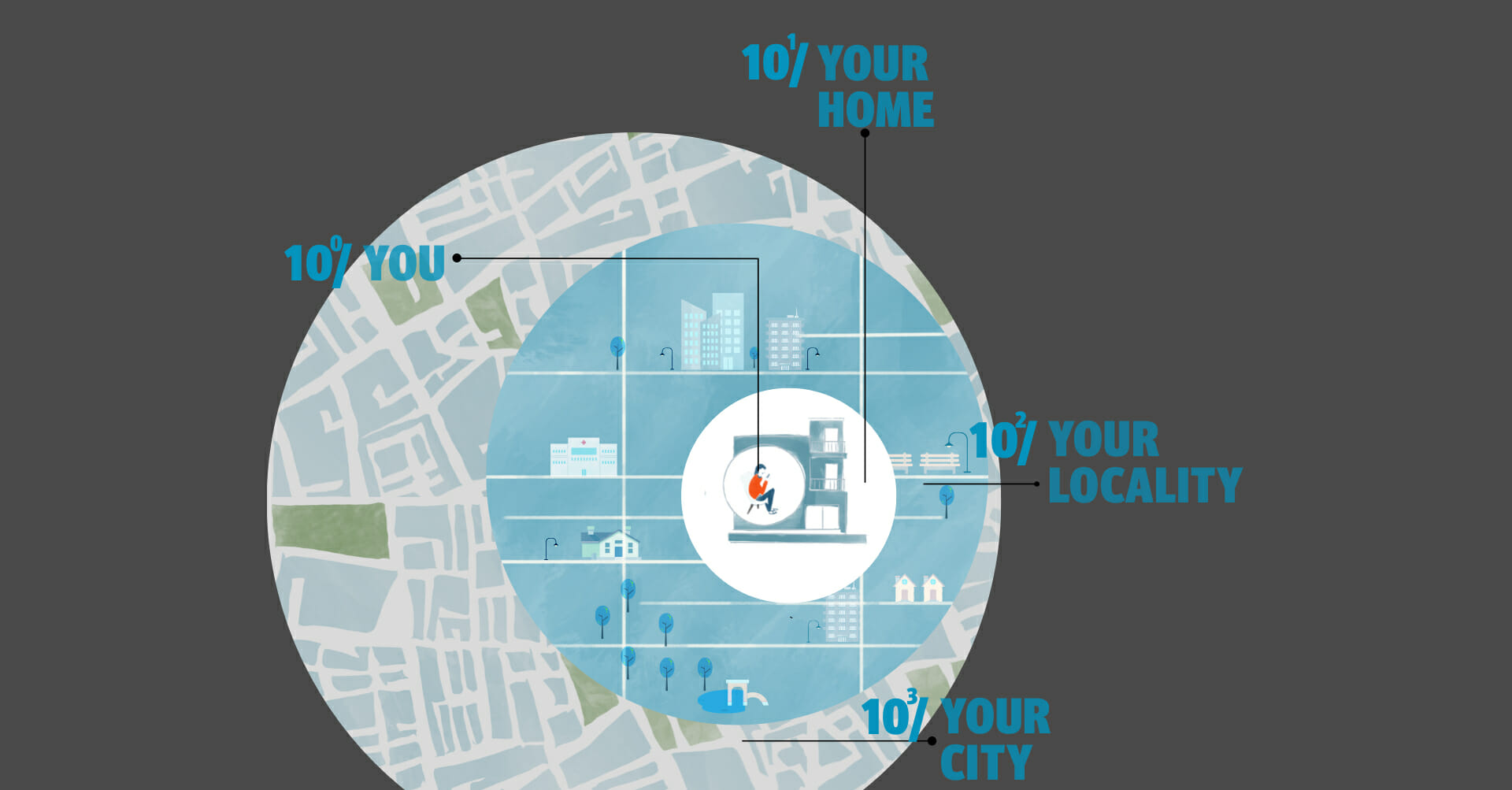
The different scales at which smart video surveillance can impact everyday lives
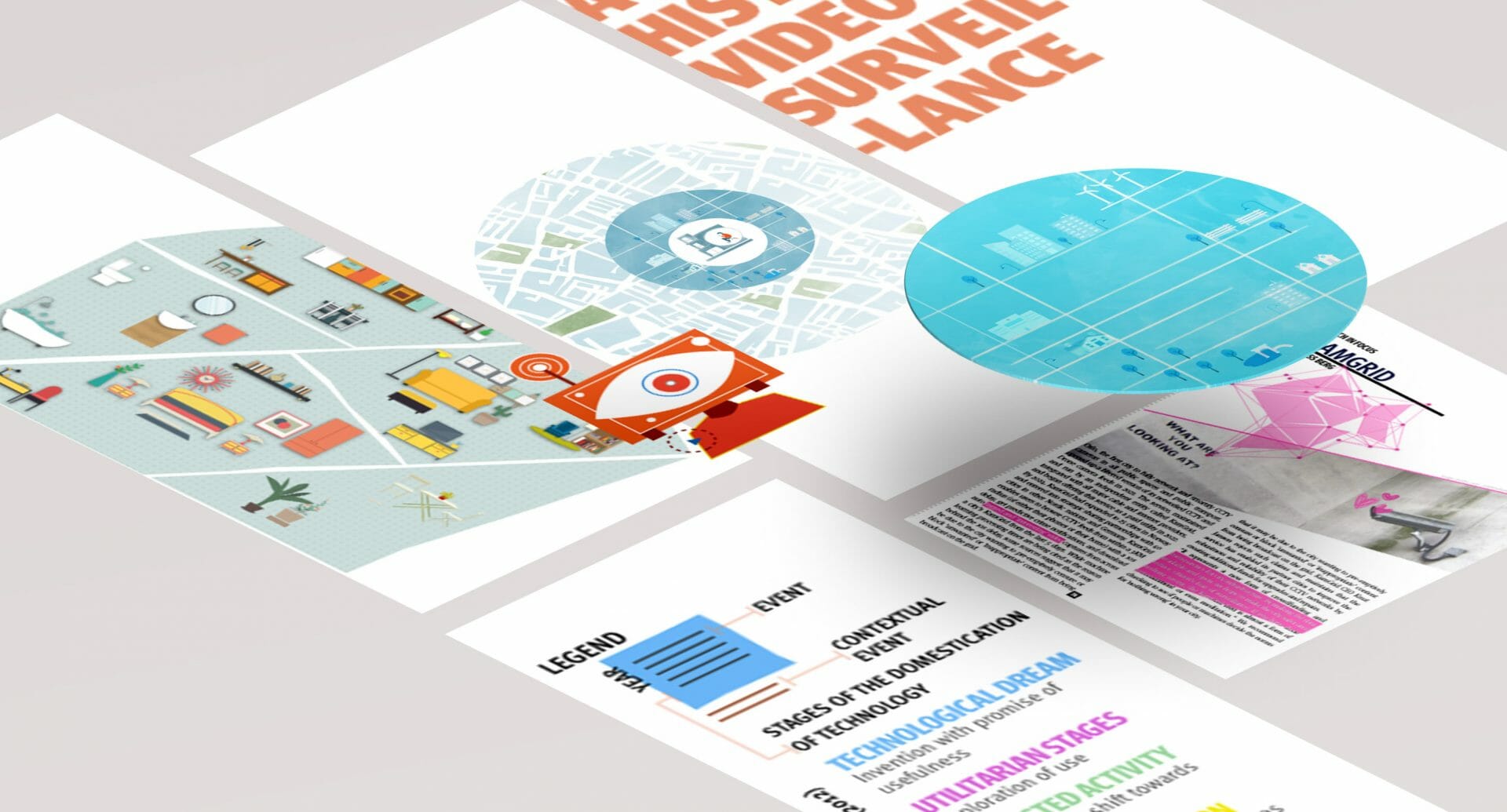
More Projects
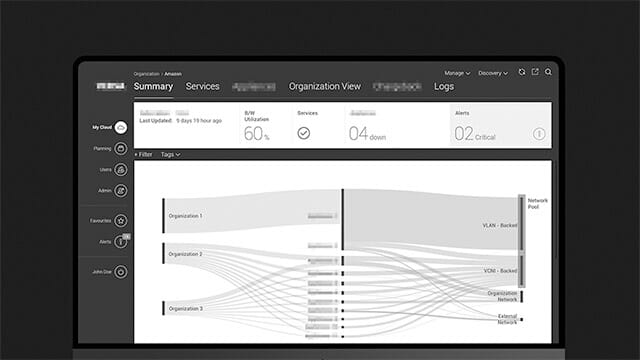
Versa Networks - Software Defined Network (SDN) Application0 to 1 product design for a SDN management application

D+H India - Transaction Banking App0 to 1 design of a responsive transaction banking app

LibraryUXIntroducing and Positioning Design for the University of Oslo Library

FriluxBranding Design at the University of Oslo Library
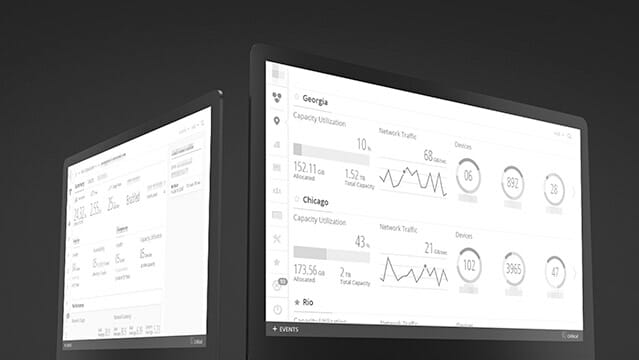
IBM Cloud Storage ManagementRe-designing the cloud object storage application to seamlessly manage and monitor large-scale storage clusters
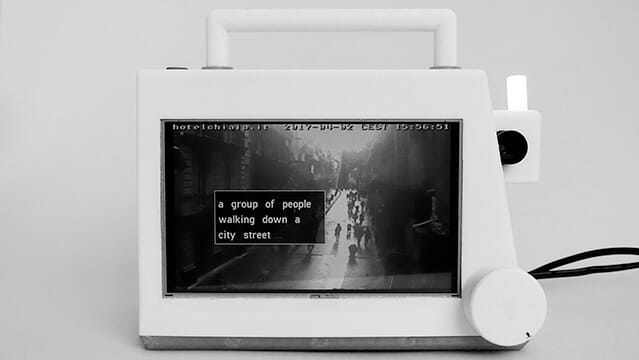
EyespyTVProbing smart surveillance through a portable TV and cultural probes
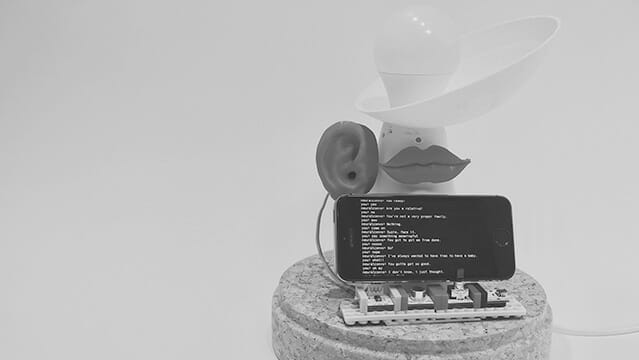
HearsayA voice-enabled lamp that is ‘always in conversation’
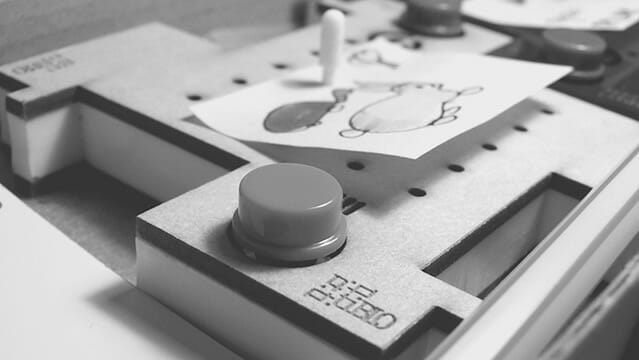
TibloDesigning an open-ended and tangible learning aid for young children with dyslexia
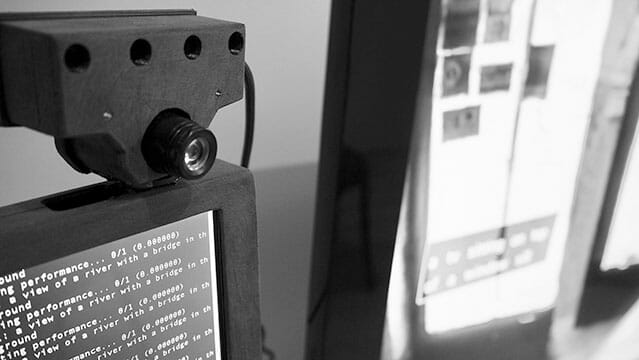
EyespyInteracting with Smart Surveillance